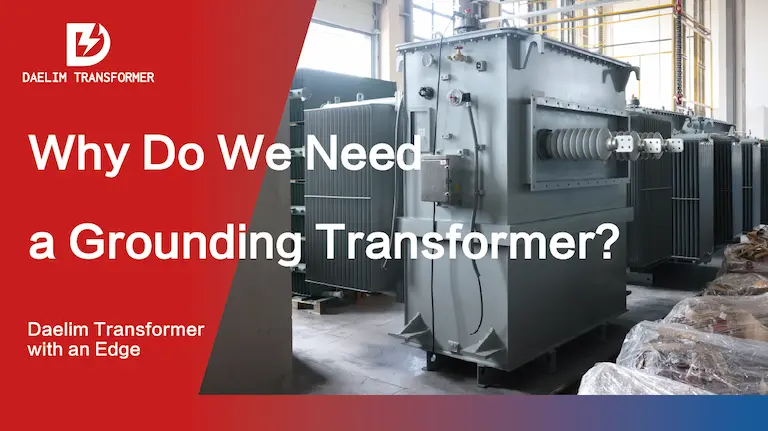Why Do We Need a Grounding Transformer?

Grounding transformers are essential for providing a reference point for ungrounded systems, ensuring safety, stability, and reliable fault detection.
Grounding transformers play a crucial role in electrical power systems, particularly in ungrounded or delta-configured networks. These transformers create a neutral point and provide grounding for systems that otherwise lack a direct connection to the ground. This function is vital for several reasons:
Safety Enhancement: Grounding transformers help protect both equipment and personnel. By providing a path to the ground, they prevent over-voltages that could potentially harm equipment or cause hazardous situations for workers.
Fault Detection: In systems without a grounding transformer, detecting line-to-ground faults can be challenging. Grounding transformers enable the detection of such faults by creating a clear path for fault currents, allowing for timely identification and correction.
System Stability: Grounding transformers help maintain the stability of the voltage levels in an electrical system. They ensure that the system remains balanced, which is particularly important in preventing oscillations and ensuring the consistent operation of connected equipment.
Protection Coordination: By creating a grounding point, these transformers facilitate better coordination of protection devices like circuit breakers and relays. This improves the overall protection scheme of the electrical network, ensuring that faults are isolated quickly and efficiently.
Small-substastion Transformer
Single Phase Pole Mounted Transformer
Oil Immersed Power Transformer
Table of Content
Practical Implementation and Usability Guidance
When implementing grounding transformers in a power distribution network, consider the following practical aspects:
Transformer Sizing: Proper sizing of the grounding transformer is crucial. It should be capable of handling the maximum expected fault current without overheating or sustaining damage. Consulting with a transformer manufacturer or a power systems engineer can help in determining the appropriate size.
Location: The placement of the grounding transformer should be strategic to ensure optimal performance. Typically, it is installed at the substation or close to the main distribution point to provide effective grounding for the entire system.
Maintenance: Regular maintenance is essential to ensure the longevity and reliability of grounding transformers. This includes periodic inspections, testing for insulation resistance, and checking for any signs of wear or damage.
Compliance: Ensure that the installation of grounding transformers complies with local electrical codes and standards. This is particularly important in the U.S., where adherence to the National Electrical Code (NEC) and other relevant standards is mandatory.
- Voltage Regulation: Higher impedance results in better voltage regulation under varying loads. This means that the voltage drop across the transformer is minimized when the load changes, ensuring a stable output voltage.
- Fault Current Limitation: Impedance plays a crucial role in limiting the fault current. A transformer with higher impedance will have a lower fault current, which can protect downstream equipment from damage during short circuits.
- Transformer Design: Understanding impedance helps in the design and selection of transformers for specific applications. For example, single-phase transformers used in residential areas and three-phase transformers used in industrial settings have different impedance requirements.
By focusing on these practical considerations, grounding transformers can significantly enhance the safety, stability, and reliability of electrical power systems. Their role is indispensable in modern electrical infrastructure, ensuring efficient operation and protection against faults.
Get it now: Basic Guide To Oil Immersed Transformer











